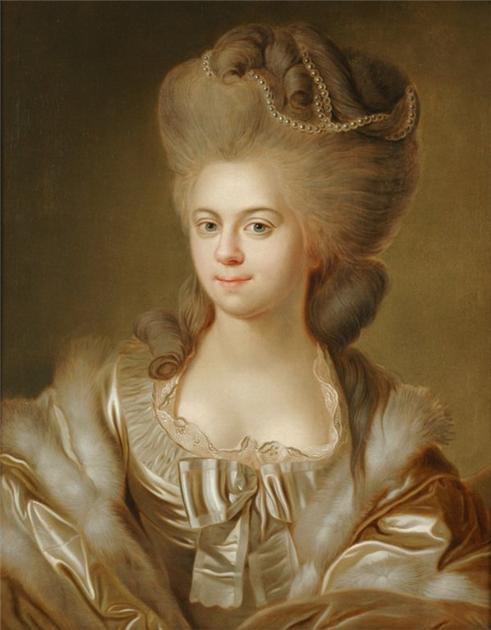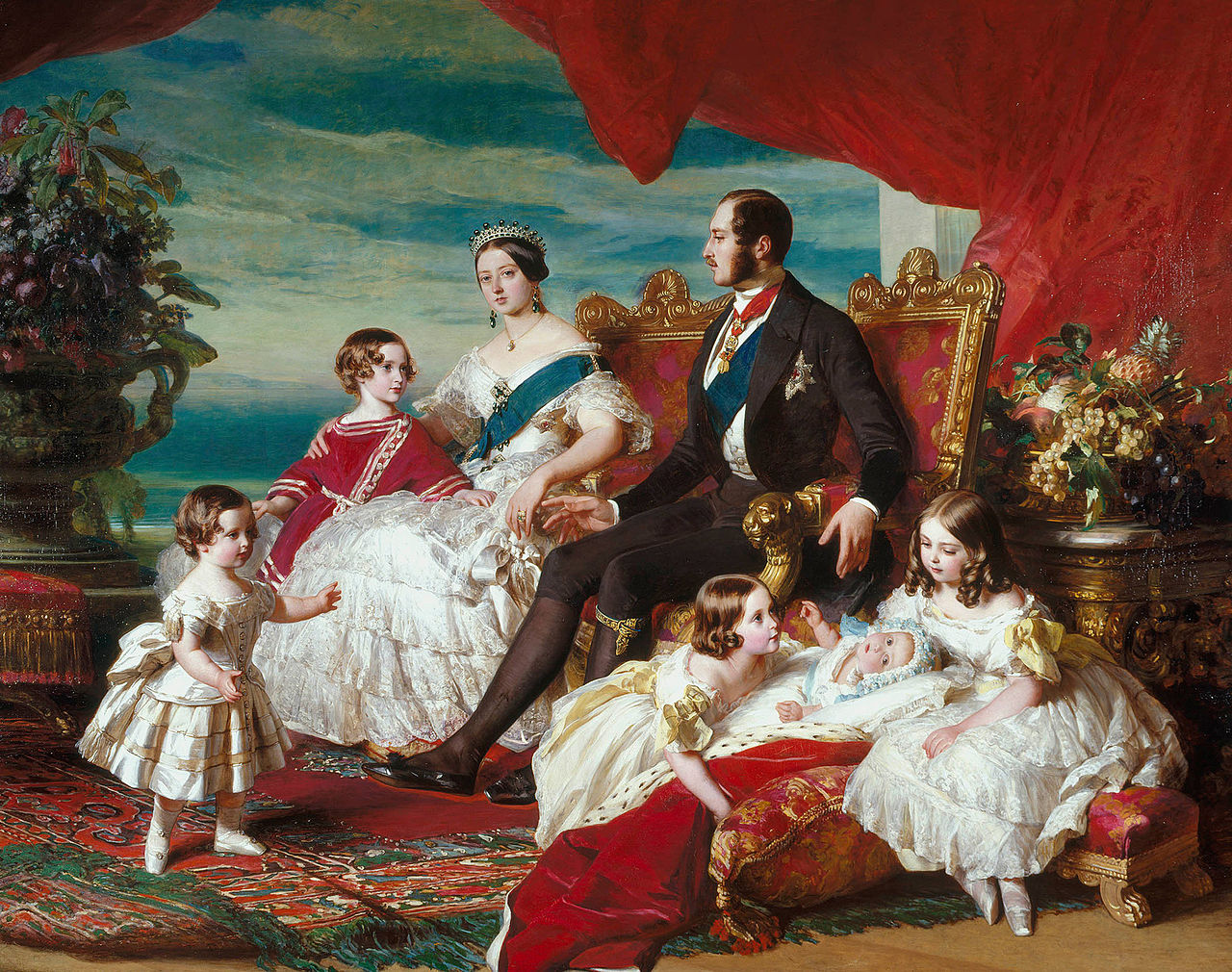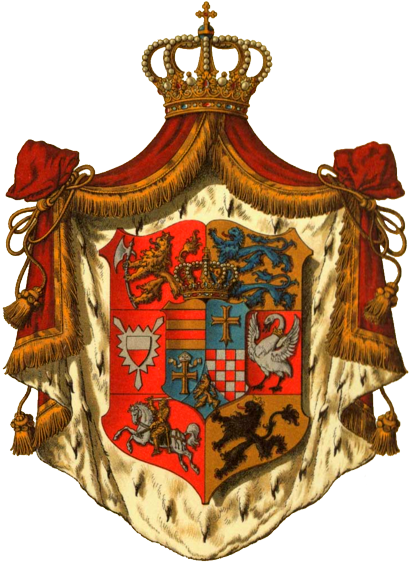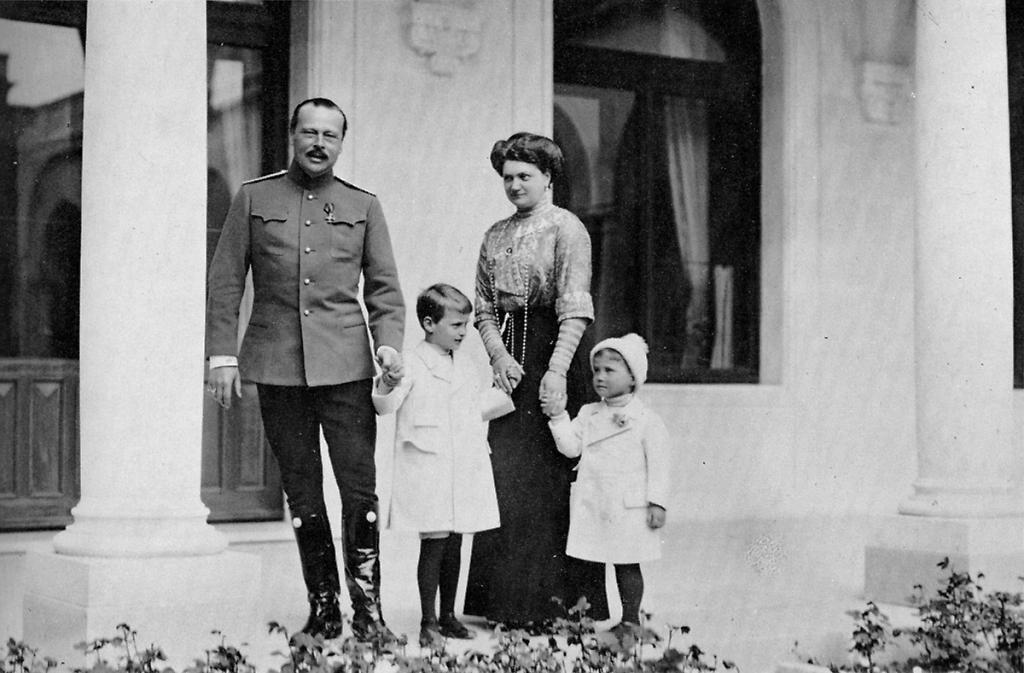by Susan Flantzer
- Captain The Honorable Harold Fox Pitt Lubbock
- Timeline: April 1, 1918 – May 31, 1918
- A Note About German Titles
- April- May 1918 – Royals/Nobles/Peers/Sons of Peers Who Died In Action
********************
Captain The Honorable Harold Fox Pitt Lubbock
Captain The Honorable Harold Fox Pitt Lubbock was the second son in his family to be killed in action during World War I. His younger brother Captain The Honorable Eric Fox Pitt Lubbock was killed in aerial combat in Ypres, Belgium on March 11, 1917, at the age 23.
Born in London on June 10, 1888, Harold was the elder of the three sons and the third of the five children of John Lubbock, 1st Baron Avebury and his second wife Alice Augusta Laurentia Lane Fox-Pitt. His mother was daughter of Augustus Henry Lane-Fox Pitt Rivers, whose collection of about 22,000 objects was the founding collection of the Pitt Rivers Museum at the University of Oxford which this author can verify is quite interesting. Harold’s father John Lubbock was a banker and a Liberal Member of Parliament who is most known for bank holidays which he introduced in the Bank Holidays Act 1871. Lubbock was also an archaeologist and coined the terms “Palaeolithic” and “Neolithic” to denote the Old and New Stone Ages.
Harold had six half-siblings from his father’s first marriage to Ellen Frances Hordern who died in 1879. His eldest half-brother John Birkbeck Lubbock succeeded their father as the 2nd Baron Avebury. The 2nd Baron never married and when he died, he was succeeded by Harold’s son John Lubbock, 3rd Baron Avebury.
Harold was educated at St. Aubyns School, a preparatory school in Rottingdean, and Eton College. He then attended Trinity College, Cambridge University. After university, Harold entered the family profession, banking, and eventually became a partner in Coutts & Co, the seventh oldest bank in the world. Several years before the outbreak of World War I, Harold joined The Queen’s Own Royal West Kent Yeomanry, a volunteer force.
On June 10, 1914, Harold married The Honorable Dorothy Charlotte Forster, daughter of Henry William Forster, 1st and last Baron Forster and The Honorable Rachel Cecily Douglas-Scott-Montagu. The couple had two children:
- John Lubbock, 3rd Baron Avebury (1915 – 1971), married (1) Cecily Sparrow, no children, divorced (2) Diana Westcott King, one daughter, divorced (3) Betty Gay Ingham, no children
- The Honorable Ursula Moyra Lubbock (1917 – 1992), married Dorian Williams, no children, divorced
At the beginning of World War I, Harold served with The Queen’s Own Royal West Kent Yeomanry in the disastrous Gallipoli Campaign fighting a losing campaign against the troops of the Ottoman Empire. In December 1915, his regiment was sent to Palestine where he served as an Adjutant and was promoted to Captain. Harold yearned to serve on the Western Front and so he obtained a transfer to the Grenadier Guards with a reduced rank of Lieutenant. On December 28, 1917, he was sent to France. He finally made it to the trenches of the Western Front on March 29, 1918.
On March 21, 1918, the Germans began their spring offensive in France, Operation Michael also called the Second Battle of the Somme and Harold took part in the defensive action. Unfortunately, he did survive long, being killed in action on April 4, 1918, near Arras, France at the age 29. The regimental history says:
“The 2nd Battalion went up into the line [on 3 April 1918] and found the trenches very wet. On the 4th, during a heavy shelling, which was entirely directed against no.1 Company on the right, Lieutenant the Hon H F P Lubbock was killed by a shell which pitched in the trench. This was a great loss to the battalion, for he was an officer of sound judgment, who did not know what fear was. Corporal Teague MM was killed at the same time, and 6 men were wounded.”
Harold was buried in Boisleux-au-Mont Communal Cemetery in Boisleux-au-Mont, France. Sadly, his widow also lost both her brothers in the war.

Grave of Captain The Honorable Harold Fox Pitt Lubbock; Photo Credit – http://www.rutlandremembers.org/
Works Cited
- En.wikipedia.org. (2017). John Lubbock, 1st Baron Avebury. [online] Available at: https://en.wikipedia.org/wiki/John_Lubbock,_1st_Baron_Avebury [Accessed 29 Oct. 2017].
- Lubbock, T. (2017). Captain The Honourable Harold Fox-Pitt Lubbock. [online] Rutland Remembers. Available at: http://www.rutlandremembers.org/fallen/277/lubbock-captain-the-honourable-harold-foxpitt [Accessed 29 Oct. 2017].
- Luscombe, S. (2017). The Grenadier Guards. [online] Britishempire.co.uk. Available at: http://www.britishempire.co.uk/forces/armyunits/britishinfantry/grenadierlubbock.htm [Accessed 29 Oct. 2017].
********************
Timeline: April 1, 1918 – May 31, 1918

April 10, 1918 – British 55th (West Lancashire) Division troops blinded by tear gas await treatment at an Advanced Dressing Station near Bethune, France after the Battle of Estaires; Photo Credit – Wikipedia
-
- March 30 – April 5 – First Battle of Villers-Bretonneux in northern France, a phase of Operation Michael
- April 1 – Royal Air Force founded by combining the Royal Flying Corps and the Royal Naval Air Service
- April 4 – 5 – Battle of the Avre, near the Avre River in Amiens, France, final phase of Operation Michael
- April 7 – 29 – Second phase of the Spring Offensive, Operation Georgette, in France (also known as Battle of the Lys)
- April 7 – 9 – Battle of Estaires, first phase of Operation Georgette
- April 10 – 11 – Third Battle of Messines, a phase of Operation Georgette
- April 12 – 13 – Battle of Hazebrouck, a phase of Operation Georgette
- April 13 – 15 – Battle of Bailleul, a phase of Operation Georgette
- April 17 – 19 – First Battle of Kemmel, a phase of Operation Georgette
- April 18 – Battle of Bethune, a phase of Operation Georgette
- April 24- 27 – Second Battle of Villers-Bretonneux, a phase of Operation Georgette
- April 25 – 26 – Second Battle of Kemmel, a phase of Operation Georgette
- April 29 – Battle of Scherpenberg, final phase of Operation Georgette
- April 30 – May 4 – Second Transjordan attack on Shunet Nimrin and Es Salt in the Jordan River Valley
- May 10 – 11 – Battle of Kaniow near Kaniv, Ukraine
- May 21 – Ottomans invade Armenia
- May 21 – 29 – Battle of Sardarabad, a phase of the invasion of Armenia, near Sardarapat (present-day Nor Armavir, Armenia)
- May 21 – 29 – Battle of Abaran, a phase of the invasion of Armenia in Bash Abaran, Armenia
- May 24 – 28 – Battle of Karakilisa, a phase of the invasion of Armenia, in Vanadzor, Armenia
- May 27 – June 6 – Third Battle of the Aisne by the Aisne River near Paris, France (also known as Operation Blücher-Yorck, third phase of the Spring Offensive)
- May 28 – Battle of Cantigny in Cantigny, France
- May 29 – 31 – Battle of Skra-di-Legen in Skra, Greece
********************
A Note About German Titles
Many German royals and nobles died in World War I. The German Empire consisted of 27 constituent states, most of them ruled by royal families. Scroll down to German Empire here to see what constituent states made up the German Empire. The constituent states retained their own governments but had limited sovereignty. Some had their own armies, but the military forces of the smaller ones were put under Prussian control. In wartime, armies of all the constituent states would be controlled by the Prussian Army and the combined forces were known as the Imperial German Army. German titles may be used in Royals Who Died In Action below. Refer to Unofficial Royalty: Glossary of German Noble and Royal Titles.
24 British peers were also killed in World War I and they will be included in the list of those who died in action. In addition, more than 100 sons of peers also lost their lives, and those that can be verified will also be included.
********************
April – May 1918 – Royals/Nobles/Peers/Sons of Peers Who Died In Action
The list is in chronological order and does contain some who would be considered noble instead of royal. The links in the last bullet for each person is that person’s genealogical information from Leo’s Genealogics Website or to The Peerage website. If a person has a Wikipedia page or a website page with biographical information, their name will be linked to that page.
Photos below of Harold Lubbock and William FitzRoy are from www.findagrave.com and photo below of Erbprinz Philipp Hermann is from https://s3.amazonaws.com/photos.geni.com
Captain The Honorable Harold Fox Pitt Lubbock (see article above)

- son of John Lubbock, 1st Baron Avebury and Alice Augusta Laurentia Lane Fox-Pitt
- born June 10, 1888 in London, England
- married 1914 The Honorable Dorothy Charlotte Forster, had two children
- Lieutenant in the Grenadier Guards
- killed in action April 4, 1918 near Arras, France, age 29
- buried at Boisleux-au-Mont Communal Cemetery in Boisleux-au-Mont, France
- brother Captain The Honorable Eric Fox Pitt Lubbock was killed in aerial combat March 11, 1917, age 23
- http://www.thepeerage.com/p4609.htm#i46083
**********
Philipp Hermann, Erbprinz zu Solms-Hohensolms-Lich

- only son of Karl, 6th Fürst zu Solms-Lich-Hohensolms and Princess Emma of Stolberg-Wernigerode
- born September 13, 1895 in Wernigerode, Saxony-Anhalt, Germany
- unmarried
- killed in action April 8, 1918 at Konstantinovka, Ukraine, age 22
- buried at Solms family cemetery in Lich, Hesse, Germany
- http://www.genealogics.org/getperson.php?personID=I00024408&tree=LEO
**********
Lieutenant Ebenezer Maclay
- eldest son of Joseph Paton Maclay, 1st Baron Maclay and Martha Strang
- born 27 December 27, 1891,
- killed in action April 11, 1918 near Arras, France, age 26
- buried at Doullens Communal Cemetery in Doullens, France
- brother Lieutenant William Strang Maclay killed in action June 28, 1915 at Gallipoli, age 19
- http://www.universitystory.gla.ac.uk/ww1-biography/?id=4555
- http://www.thepeerage.com/p31182.htm#i311812
**********
Ferdinand Carl Heinrich Fischler, Graf von Treuburg
- son of Franz Xaver Fischler, Graf von Treuburg and Ludovika von Wendt
- born February 6, 1893 in Murnau, Bavaria, Germany
- married 1917 Elisabeth von Gehe, no children
- killed in action April 18, 1918 at La Bassée, France, age 25
- http://www.genealogics.org/getperson.php?personID=I00292706&tree=LEO
**********
Lieutenant William Henry Alfred FitzRoy, Viscount Ipswich

- only son and heir of Alfred William Maitland FitzRoy, 8th Duke of Grafton and Margaret Rose Smith
- born July 24, 1884 in London, England
- married 1913 Auriol Margaretta Brougham, had three children, son John Charles William FitzRoy succeeded his grandfather as 9th Duke of Grafton
- Lieutenant in the Royal Air Force
- killed in a plane crash April 23, 1918, age 33 (predeceased both his father and grandfather, the 7th Duke of Grafton)
- buried at St Genevieve Churchyard in Euston, Suffolk, England
- http://www.thepeerage.com/p1042.htm#i10411

Grave of Lieutenant William Henry Alfred FitzRoy, Viscount Ipswich; Photo Credit – www.findagrave.com
**********
Lieutenant The Honorable Philip Granville James Fitzalan-Howard
-
- son of Francis Edward Fitzalan-Howard, 2nd Baron Howard of Glossop and Hyacinthe Scott-Kerr
- born April 15, 1895 in London, England
- married 1916 Gladys Cecily Clara Norton, one daughter born two months after his death
- Lieutenant in the Welsh Guards
- died from wounds received in action May 24, 1918, age 23
- buried in Bac du Sud British Cemetery in Bailleulval, France
- http://www.thepeerage.com/p6065.htm#i60650
**********








 Friederike of Württemberg, Princess of Holstein-Gottorp
Friederike of Württemberg, Princess of Holstein-Gottorp



















































